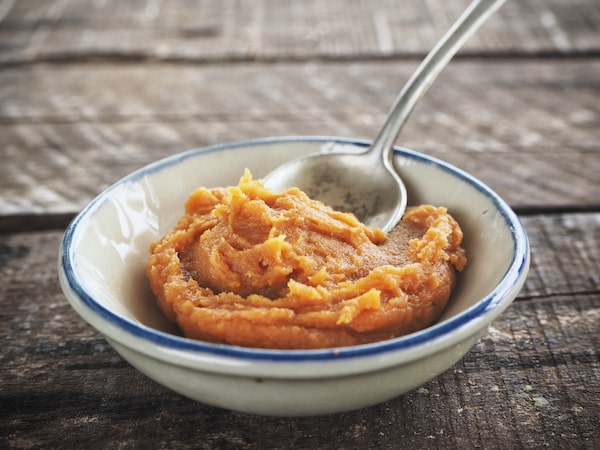
luknaja/iStockPhoto / Getty Images
The one fermented food I always have in my refrigerator is Japanese miso. The lightly salty, fragrant flavour is unique, and it imparts a spectacular umami taste to everything it touches. The Japanese have always regarded miso as a health food. It is a source of protein, vitamins and minerals and is low in calories and fat. As it is fermented, it can contain probiotics, which help keep your gut happy. It is also said to help with menopause symptoms. Watch out, though – soy-based foods can trigger migraines.
Miso is made by crushing boiled soy beans with koji (a fermentation starter used in making sake) and barley or rice. It is left for a few months, or up to several years, depending on the variety. By varying the proportions of barley or rice to soybeans and salt, miso can be light, sweet and fragrant or darker, saltier and more strongly flavoured. Try different kinds to learn which you like best. Health-food stores usually carry the organic and naturally fermented kind, which can have better probiotic levels.
The key to using miso properly is in balance of flavour. Too much miso can overwhelm, too little has no effect. Stir in, taste and adjust.
What tools do you really need in the kitchen – and which can you do without?
Light miso is delicate in texture and not too salty. It is often called white, although it has a yellowish colour. Try it in salad dressings instead of oil or as part of a marinade. The famous miso black cod, from celebrated chef Nobu Matsuhisa, of the many Nobu restaurants worldwide, mixes light miso with sake and mirin. The mixture is slathered onto the fish, which then marinates for a few hours before being baked or broiled.
Use miso to energize the flavour of soups, sauces or vegetables. It is often used in ramen for added flavour. Miso can even be used in a base for ice cream for people avoiding dairy products. It should be noted that darker miso is best for heartier winter cooking. It combines well with strong soups, beans, vegetables and lentils. It is excellent in meat stews, added just at the end for that umami flavour. And it will keep for up to a year refrigerated.
Never boil miso, which will kill any probiotics; instead, always add toward the end of cooking.
A common use of miso is in miso soups where dashi, a Japanese stock made with kombu seaweed and dried bonito flakes, is mixed with miso. You can buy dashi in granular form at Asian supermarkets. Dissolve it in hot water then whisk in the miso. Depending on your taste preference, you can use light or dark miso. Use about 1 tablespoon miso to 1 cup dashi. Other ingredients, such as tofu, mushrooms and seaweed, are often added.
Need some advice about kitchen life and entertaining? Send your questions to lwaverman@globeandmail.com.
Live your best. We have a daily Life & Arts newsletter, providing you with our latest stories on health, travel, food and culture. Sign up today.
 Lucy Waverman
Lucy Waverman